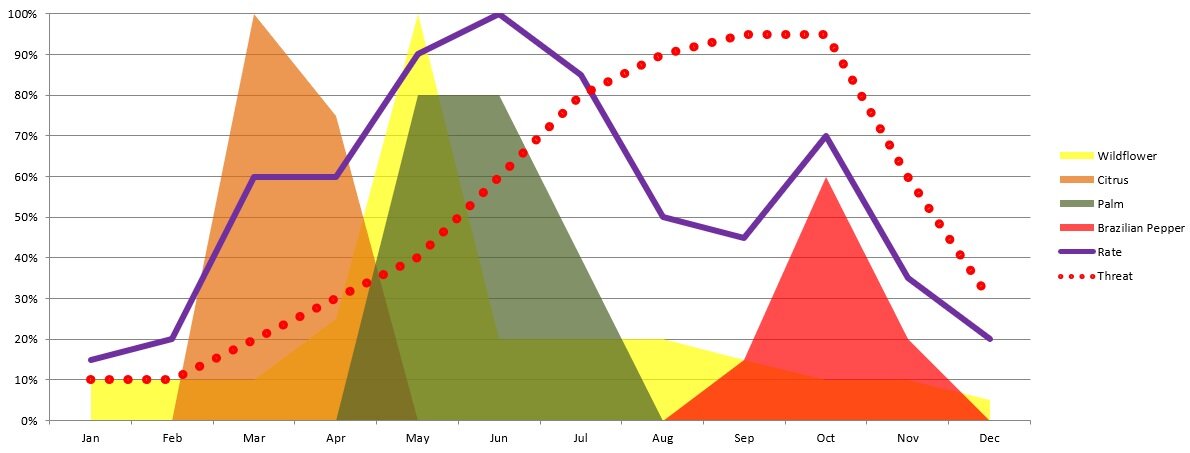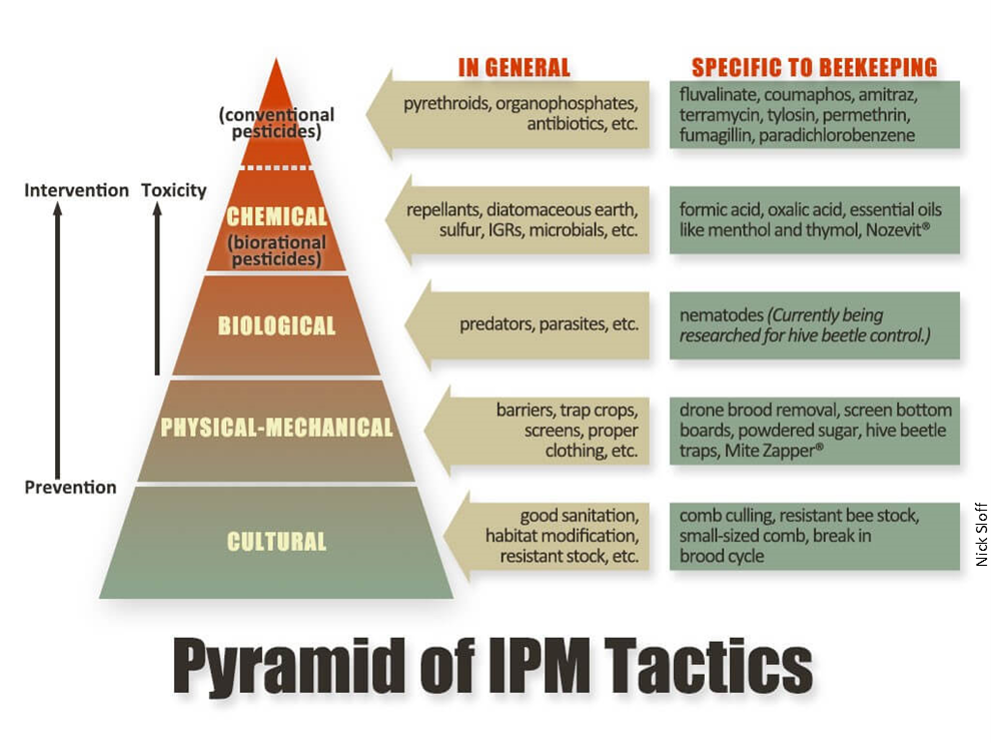Integrated Pest Management for Florida Beekeepers
In order to properly implement the concepts explained here, a beekeeper must understand their environment, and how it affects activities within the hive. The graph below illustrates the relationship between bloom periods, bee population, and pest threat levels throughout the year in our area.
Integrated Pest Management (IPM), in the context of beekeeping, is usually centered around battling the destructive Varroa mite. However, it is relevant to a number of honey bee pests.
The goal of IPM is to integrate an approach beyond chemical intervention with pesticides, by incorporating a number of preventative methods.
IPM is often visually represented with a pyramid, the foundations of which are more laborious but less toxic for the bees and the beekeeper.
A lot of these tactics mimic what isolated, wild honey bee colonies do in nature.
From the Bottom Up
The foundation of the IPM pyramid is cultural tactics:
Choose an apiary site with good sun and drainage.
Choose bees with robust genetics.
Reduce drifting and robbing by spacing colonies out, making them visually distinct from each other, and keeping entrances small.
Replace old comb to rid colonies of pathogens and parasites contained within.
Implement brood breaks.
Develop a sanitary routine.
Let’s Get Physical
Physical and mechanical tactics include:
Screened bottom boards.
Drone brood removal.
Barriers and traps.
Powdered sugar.
Few and Far Between
Biological controls include predators and parasites that prey upon honey bee pests. Unfortunately, there are few of these to choose from, commercially. Significant progress has been made in the research of nematodes, fungi, bacteria, and protozoa that may be of benefit in the future.
Preliminary findings suggest that rough hive interiors encourage the occupancy of benevolent hive mates, such as pseudoscorpions.
From this point, interventions used to combat pests become increasingly toxic and stressful to the bees. IPM requires accurate information on the pest population in a given hive. Only by determining the threat level can a beekeeper make the appropriate decision on how to move forward.
It is important to understand how a pesticide works, and to read the label. Additional protective gear may be required for safe application. Using the same products repeatedly causes resistance.





